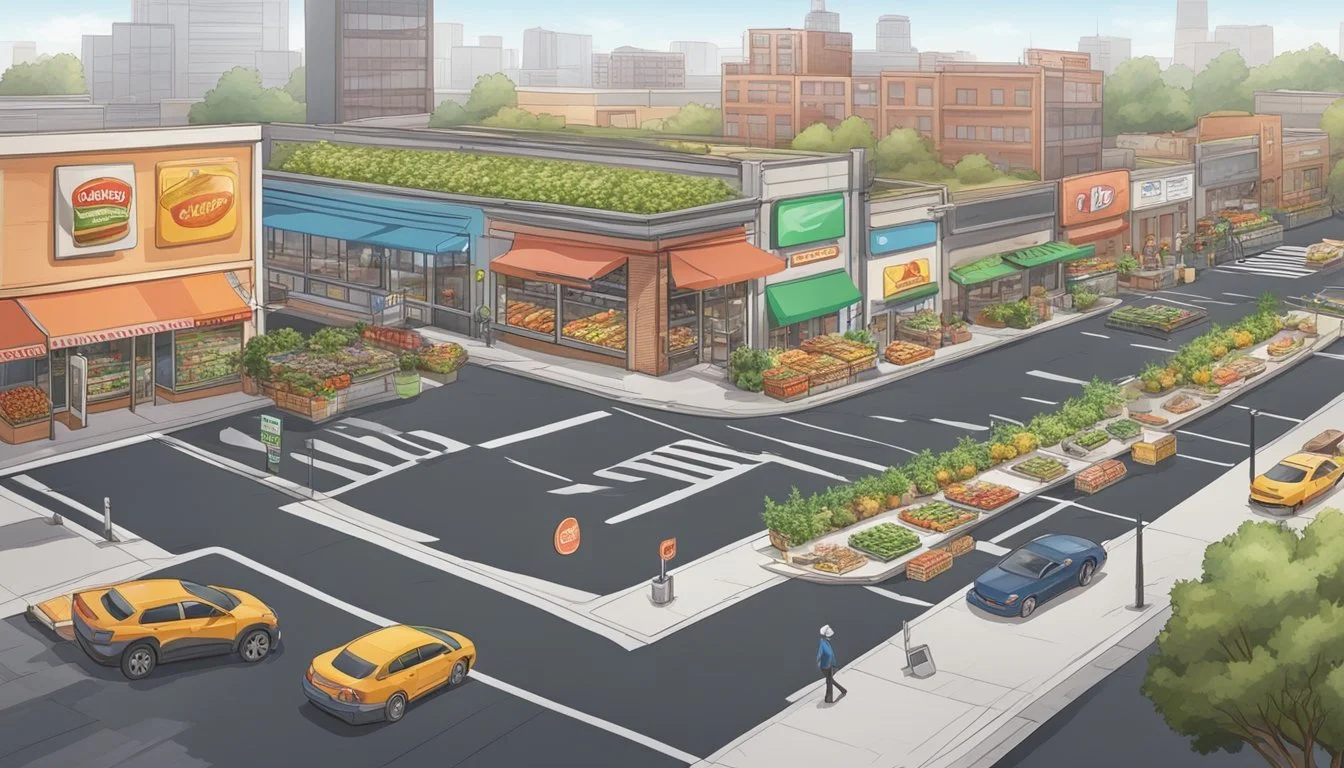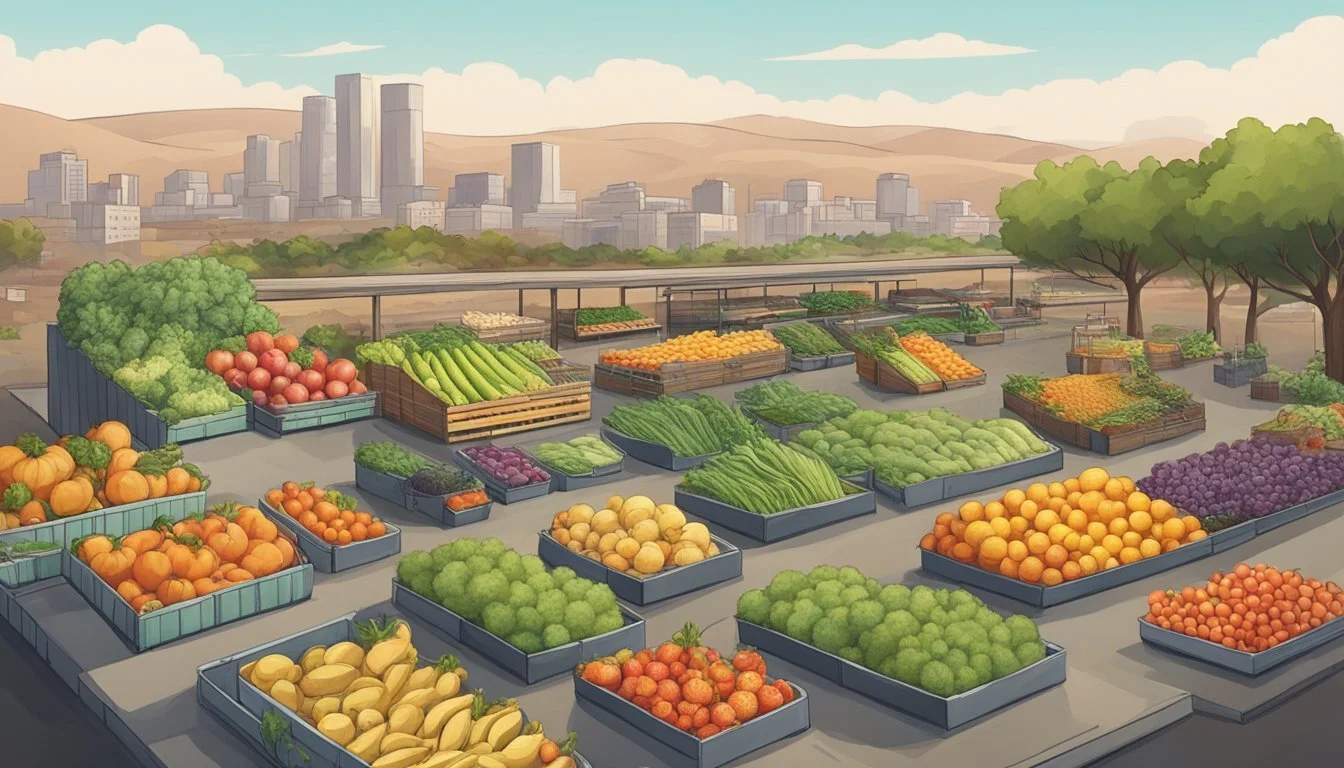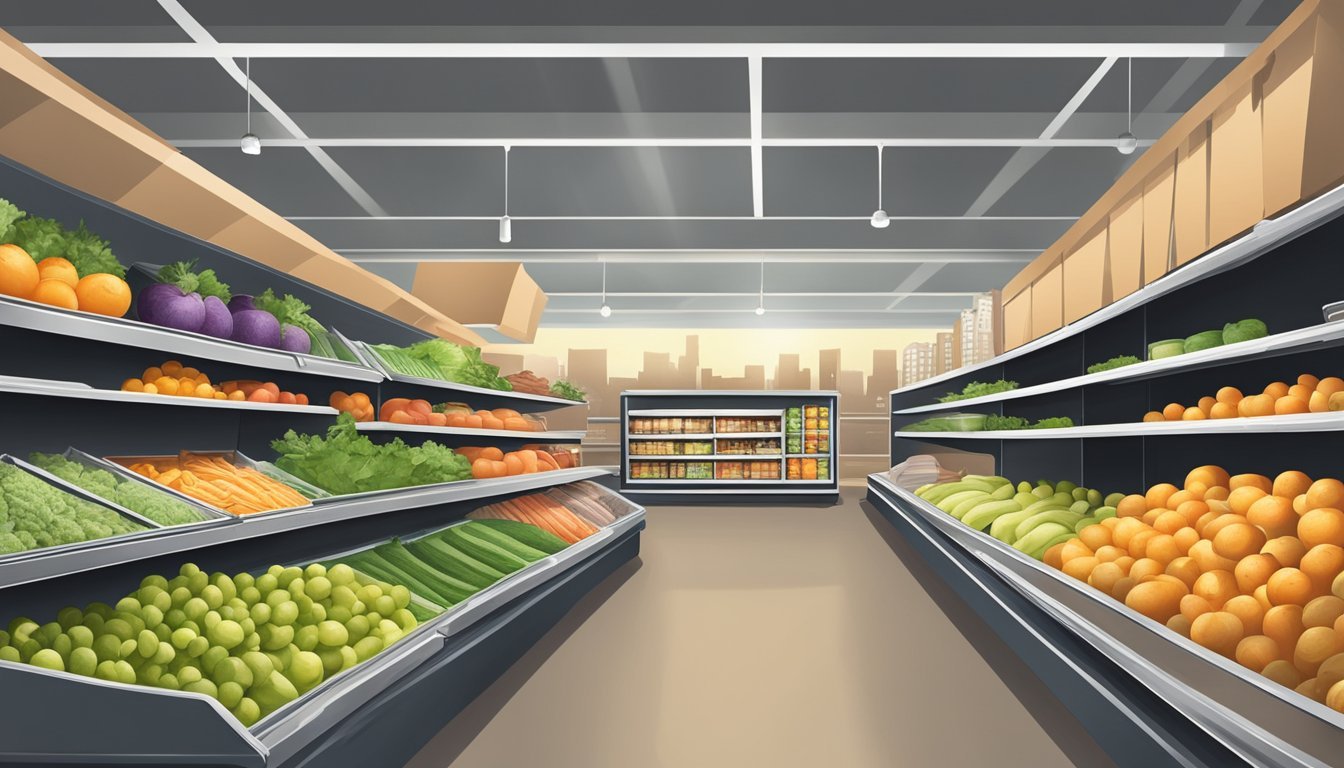Food Deserts in America
Unveiling the Urban Nutrition Crisis
Food deserts in America represent a stark reality for many residents across communities. These areas are defined by their limited access to affordable and healthy food options, often impacting low-income and historically marginalized neighborhoods. The scarcity of a supermarket, grocery store, and healthy food providers creates nutritional gaps for the people living in these zones. The effects of living in a food desert extend beyond just a lack of food variety—they often correlate with higher instances of diet-related diseases such as obesity and diabetes.
The causes of food deserts are complex, involving economic, social, and physical factors. Historically, supermarket chains and food suppliers may have opted to bypass certain areas due to low profitability, thereby creating regions where convenience stores and fast-food restaurants become the primary food sources. These outlets typically offer fewer healthy food options, making it harder for customers to buy the necessary nutrients for a balanced diet.
Attempts to address the challenge of food deserts have been multifaceted, including government-led initiatives to improve access to healthy foods. Community solutions like local farmers' markets and policies encouraging retailers to establish branches in underserved areas have all been trialed. Despite these efforts, food deserts persist, and there is an ongoing discussion about alternative approaches to tackle food insecurity, taking into account the changing dynamics of food distribution, particularly in light of the COVID-19 pandemic which has further highlighted the issue's significance.
Defining Food Deserts
Food deserts are geographic areas where residents have limited access to healthy and affordable food. This scarcity has significant implications for the health and economic stability of communities.
Characteristics of Food Deserts
Food deserts typically share several common characteristics. These include:
Limited access to supermarkets: Areas are often underserved by the local supermarket or grocery store, forcing residents to rely on convenience stores or fast food restaurants, which may not offer fresh produce.
Economic barriers: Many food deserts exist in low-income neighborhoods, where economic constraints further limit residents' ability to purchase healthy food options even if they are available.
Geographical constraints: Residents may live considerable distances from food retailers that stock healthy, affordable food, potentially without access to reliable transportation.
Census tracts data: Food deserts are often identified using census tract data, which considers both the distance to the nearest supermarket and the income level of the area.
Food Desert Locator Tools
Several tools have been developed to identify and analyze food deserts, such as:
USDA's Food Environment Atlas: This tool integrates food desert data with other food environment factors, covering areas like grocery store availability and community health outcomes.
Food Desert Locator: Previously available as an online resource, this tool helped to identify food desert census tracts by considering access issues together with income-related metrics.
These tools are crucial for researchers, policymakers, and community planners to understand and address the challenges associated with food deserts.
Demographic Factors
Food deserts in America often correlate with demographic terrain, where the geography of socioeconomic status and race intertwines with the accessibility of nutritious food options.
Populations Affected by Food Deserts
These areas predominantly affect low-income communities where financial constraints limit the ability to purchase healthy foods. Food deserts located in urban and rural areas experience varied impacts. In urban settings, high-density populations with black households and other minorities face notable disparities in food accessibility. These communities sometimes lack adequate transportation to reach a grocery store that provides healthy food options. In contrast, rural food deserts may arise from the sheer distance and isolation from such retailers, creating barriers regardless of the population's ethnic composition.
Households with Children and Food Accessibility
The presence of households with children in food deserts raises critical concerns about the developmental impacts of limited food access. In low-income families, these conditions are exacerbated by economic limitations that can restrict a child's diet quality and variety.
Poverty's Role: Children in impoverished areas may rely on school meals as their primary food source, with fewer options available at home.
Urban vs. Rural: Accessibility issues are compounded for households without vehicles, particularly in rural areas where public transportation may be non-existent.
Causes of Food Deserts
The prevalence of food deserts in America can largely be attributed to complex socio-economic and systemic factors. These range from location-specific transportation challenges to broader economic and racial issues affecting communities.
Location and Transportation Issues
In both urban and rural areas, geographic location significantly impacts access to fresh, affordable food. Urban residents may live miles away from the nearest grocery store, and without a vehicle, it may become nearly impossible to reach supermarkets. Rural communities often face similar challenges due to the greater distances between each grocery store, making transportation a critical barrier.
Economic Challenges and Market Forces
The presence of food deserts is often tied to an economic crisis within a community. Each supermarket and grocery store operates on market demand, and in low-income areas, there might be lower financial incentive for these businesses to set up shop. These economic challenges restrict the availability of healthy food options for residents, further entrenching the community in a cycle of poor nutritional access.
Systemic Racism and Segregation
Historically, systemic racism and segregation have played a role in creating and perpetuating food deserts. Certain demographics, particularly Black and Hispanic communities, have been systematically marginalized through discriminatory practices such as redlining, affecting their ability to access a variety of services including a grocery store. This has led to an uneven distribution of food resources, contributing to the creation of food deserts.
Impact on Health
There is no doubt that food deserts exist, and communities living in them in America grapple daily with health impacts stemming from a lack of access to nutritious, healthy foods, often leading to diet-related health issues such as chronic diseases and obesity.
Nutritional Deficiencies and Chronic Disease
Individuals in food deserts face challenges in obtaining fresh food and other nutritious foods. This reliance on processed foods and the scarcity of healthy foods can lead to nutritional deficiencies that are linked to chronic diseases. Diabetes and high blood pressure are commonly observed chronic conditions in these areas. A consistent diet lacking in essential nutrients may increase the risk of these and other chronic health issues.
Diabetes: The absence of affordable, healthy nutritious foods contributes to a diet high in processed foods, which has been associated with an increased risk of type 2 diabetes.
High Blood Pressure: Limited access to fresh fruits and vegetables, often rich in potassium and other minerals that help lower blood pressure, can contribute to hypertension.
Obesity and Related Health Risks
Food insecurity and limited access to healthful foods in food deserts contribute to higher rates of obesity. Obesity is a serious health concern, increasing the risk for other complications like heart disease and stroke. A study might reveal that the body mass index (BMI) of individuals in food deserts tends to be higher compared to those with better access to healthy foods.
Obesity: A lack of affordable healthy foods can lead to the consumption of calorie-dense, but nutrient-poor options, contributing to increased rates of obesity.
Related Health Risks: Aside from obesity itself, individuals in food deserts are at a heightened risk for obesity-related conditions, such as certain cancers and joint problems, due to the challenges of maintaining a balanced diet.
Food Assistance Programs
Food assistance programs are essential in combatting food deserts by providing access to healthy food for low-income communities.
U.S. Department of Agriculture Initiatives
The U.S. Department of Agriculture (USDA) plays a pivotal role in the fight against food deserts through various initiatives. The USDA administers programs like the National School Lunch Program, which offers free or reduced-price meals to children in schools, ensuring that students receive essential nutrition to support their academic success. Additionally, the Emergency Food Assistance Program provides free emergency food assistance to low-income Americans, while the Seniors Farmers' Market Nutrition Program aims to increase the consumption of fresh food among older adults. These programs collectively target vulnerable populations, assisting in alleviating food scarcity in underserved areas.
SNAP and Nutrition Education
The Supplemental Nutrition Assistance Program (SNAP), formerly known as food stamps, is the largest program in the domestic hunger safety net. SNAP offers nutrition assistance to millions of eligible, low-income individuals and families, directly targeting food insecurity. It is crucial for children, with millions of families relying on this support to maintain basic food requirements. Alongside providing monetary assistance for food purchases, SNAP includes a nutrition education component, which aims to improve the likelihood of participants making wholesome food choices within a limited budget and promotes a more active lifestyle. Through educational resources and empowerment, SNAP bridges the gap not only in food availability but also in fostering healthier eating habits.
Local and Community Efforts
In combating food deserts, local initiatives often spearhead innovative solutions focused on enhancing food security through urban agriculture and supportive nonprofit programs.
Urban Gardening and Farmers Markets
Urban gardening initiatives transform vacant city lots into community gardens, where residents grow produce to mitigate food scarcity. Community gardens serve dual purposes: they increase fresh food availability and foster community engagement. Farmers markets complement these gardens by offering a platform for local small-scale farmers to sell fresh wholesome food directly to urban consumers, often at affordable prices relative to large retail chains.
Nonprofit Organizations and Food Pantries
Nonprofit organizations play a crucial role in addressing food deserts. They often operate food pantries, providing emergency food supplies at no cost, and may host nutrition education to improve healthy eating habits. In regions like West Virginia, nonprofits have been pivotal in opening stores that carry affordable and nutritious food and offer community-oriented services, coupling access to healthy foods with valuable knowledge on nutrition.
Policy and Advocacy
Policy interventions and advocacy efforts are central to addressing the complexities of food deserts in America. Both governmental and community-based strategies play crucial roles in transforming food landscapes.
Federal and State Government Actions
Federal policies have included funding initiatives aimed at expanding access to healthy food in underserved areas. The 2008 Farm Bill, for example, was a landmark piece of legislation that formally recognized the issue of food deserts. This bill included provisions for increasing healthy food availability in food deserts, primarily through incentivizing retail development. At the state level, various programs have been enacted that offer financial and technical support to food retailers in order to set up and maintain operations in areas lacking in wholesome food access.
Government Level Action Federal Funding initiatives for wholesome food access. State Technical support for retailers.
Community Advocacy and Public Awareness
Community advocacy groups are instrumental in raising public awareness and driving policy change. By highlighting the health disparities caused by food deserts, these groups galvanize public and private support for interventions. In some cases, local nonprofits work directly with policymakers to design and implement community-specific solutions, fostering statewide and local commitments to eliminate food insecurity.
Advocacy efforts range from grassroots campaigning to partnerships with government entities.
Public awareness is increased through education, emphasizing the importance of wholesome food access and the impact of food deserts on community health.
Addressing Food Deserts
Efforts to address each food desert in America typically focuses on two main strategies: improving local access to full-service grocery stores and enhancing transportation and distribution systems. These initiatives aim to ensure that nutritious and affordable food is accessible to all communities, especially those in underserved areas.
Improving Grocery Store Access and Food Supply
Each food desert is often characterized by a lack of nearby supermarkets or grocery stores that offer a variety of fresh produce, dairy, and meats. To counter this, several solutions have been put forward:
Incentive Programs: Financial incentives and grants can encourage the establishment of supermarkets and grocery stores in underserved areas.
Mobile Markets and Pop-Up Stores: Temporary and mobile market solutions provide residents with periodic access to healthy food options.
Urban Agriculture: Community gardens and urban farms can supplement local food supply, allowing residents to partake in growing fresh produce.
Transportation and Infrastructure Solutions
Access to proper transportation is often a significant barrier in a food desert, as residents may find it difficult to reach food sources that are beyond walking distance. Addressing this involves:
Improved Public Transport: Enhanced bus and shuttle services to and from grocery stores help residents without personal vehicles.
Infrastructure Support: Investments in sidewalks, bike lanes, and safe walkways encourage people to visit nearby stores on foot or by bicycle.
Partnership with Ride-Share Services: Subsidies or partnerships with ride-share companies can provide affordable travel options to and from grocery stores.
Future Outlook
The efforts to address each food desert in America are increasingly innovative and tied to economic sustainability.
Innovations and Long-Term Strategies
Innovative approaches are unlocking new possibilities for delivering healthy food to underserved populations. They emphasize long-term solutions that focus on community engagement and technological advances. For instance, mobile markets and community-supported agriculture (CSA) programs are bridging the gap for residents in remote areas. These strategies rely on robust logistical operations and partnerships between local governments, non-profits, and private sector stakeholders to ensure consistent access to nutritious food options.
Economic Development and Sustainability
Economic initiatives are imperative for the sustainability of efforts combating each food desert. Investment in urban agriculture encourages local food production, in turn, fostering job creation and community resilience. Successful models combine federal funding and private investments to establish grocery stores in underserved areas. Not only do these ventures provide residents with access to healthy foods, but they also inject economic vitality and promote a more sustainable food ecosystem.
Conclusion
The examination of each food desert often reveals a multifaceted issue impacting communities across America. They are identified by their lack of access to affordable and healthy foods. Demographically, these areas often encompass low-income populations, highlighting a significant intersection with socioeconomic status.
The COVID-19 pandemic underscored the fragility of the social safety net, magnifying the gravity of food insecurity. Employment instability contributed to exacerbated disparities in food availability. Notwithstanding previous efforts, such as the Pennsylvania Fresh Food Financing Initiative, sustained and strategic action is essential.
Strategies that have emerged focus on both short-term relief and long-term solutions—ranging from the expansion of public transportation to healthy food priority areas to investment in local food infrastructures. Decision-makers are urged to revisit the approaches toward resolving the inequalities surrounding food access.
To redress the imbalance, efforts must continue to shift from merely identifying a food desert to actively implementing inclusive policies. Policy reorientation and community engagement play pivotal roles in advancing diet quality and ensuring food security for all Americans.
It is imperative to employ a comprehensive paradigm that transcends traditional mapping and addresses the root causes. With informed policies and community-centric solutions, the nation can work towards eradicating the constraints imposed by food deserts.





